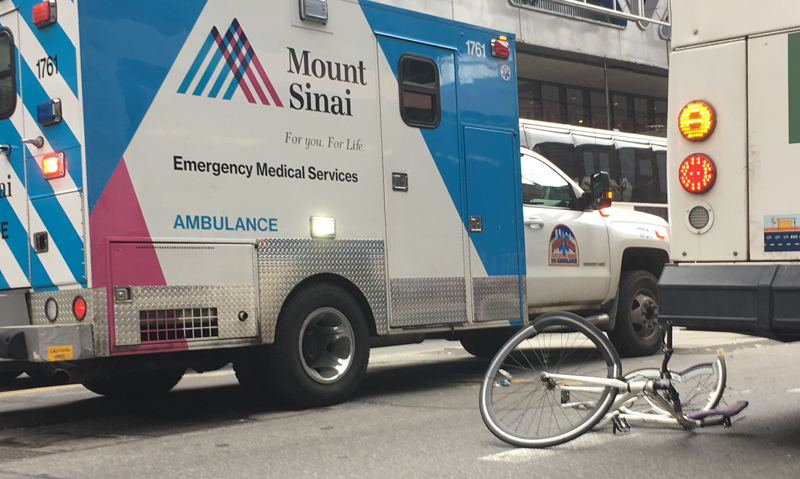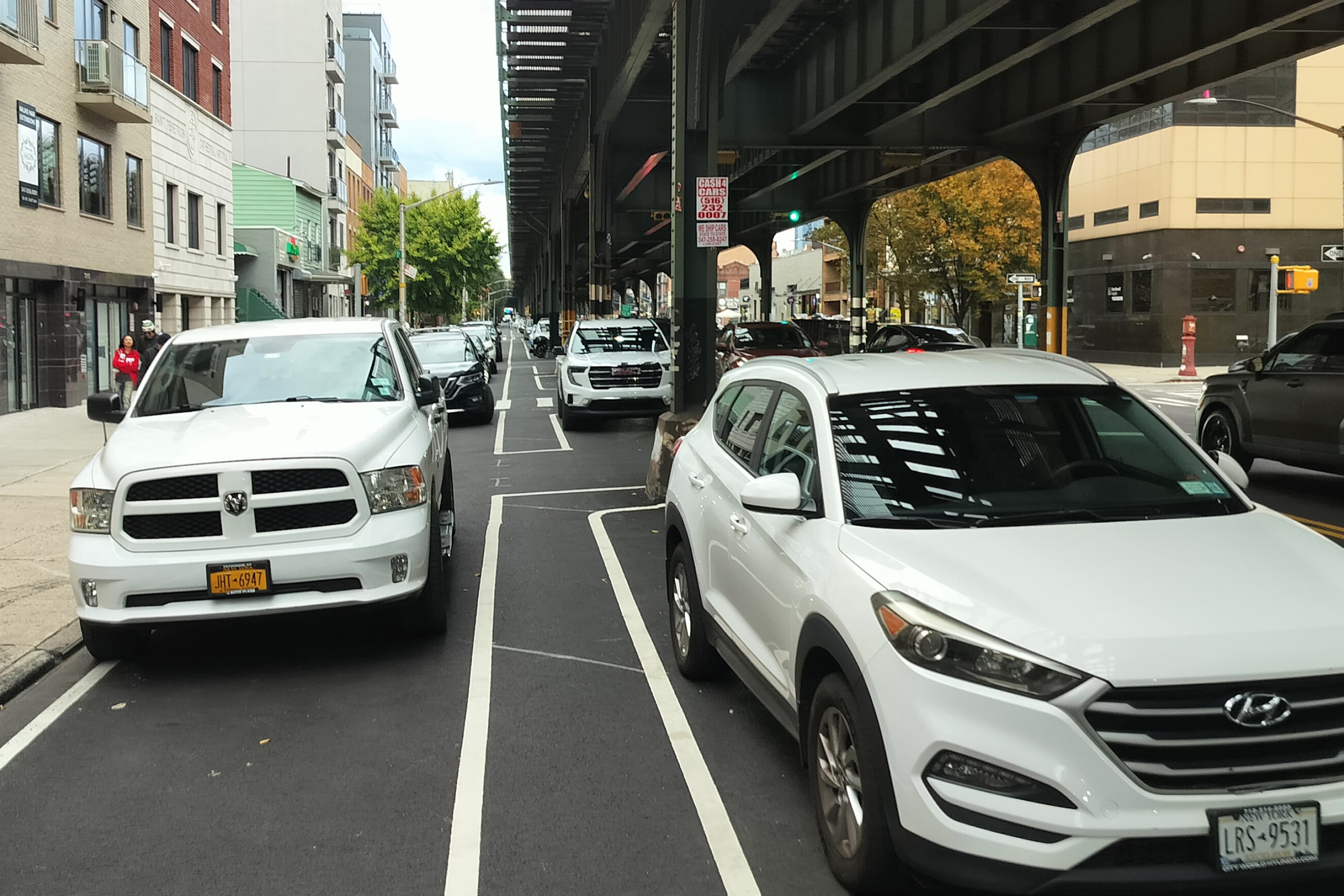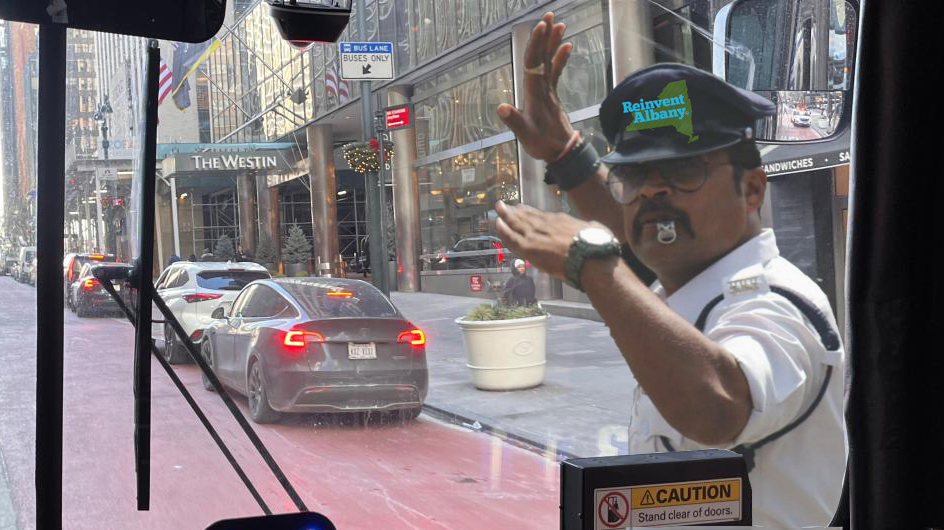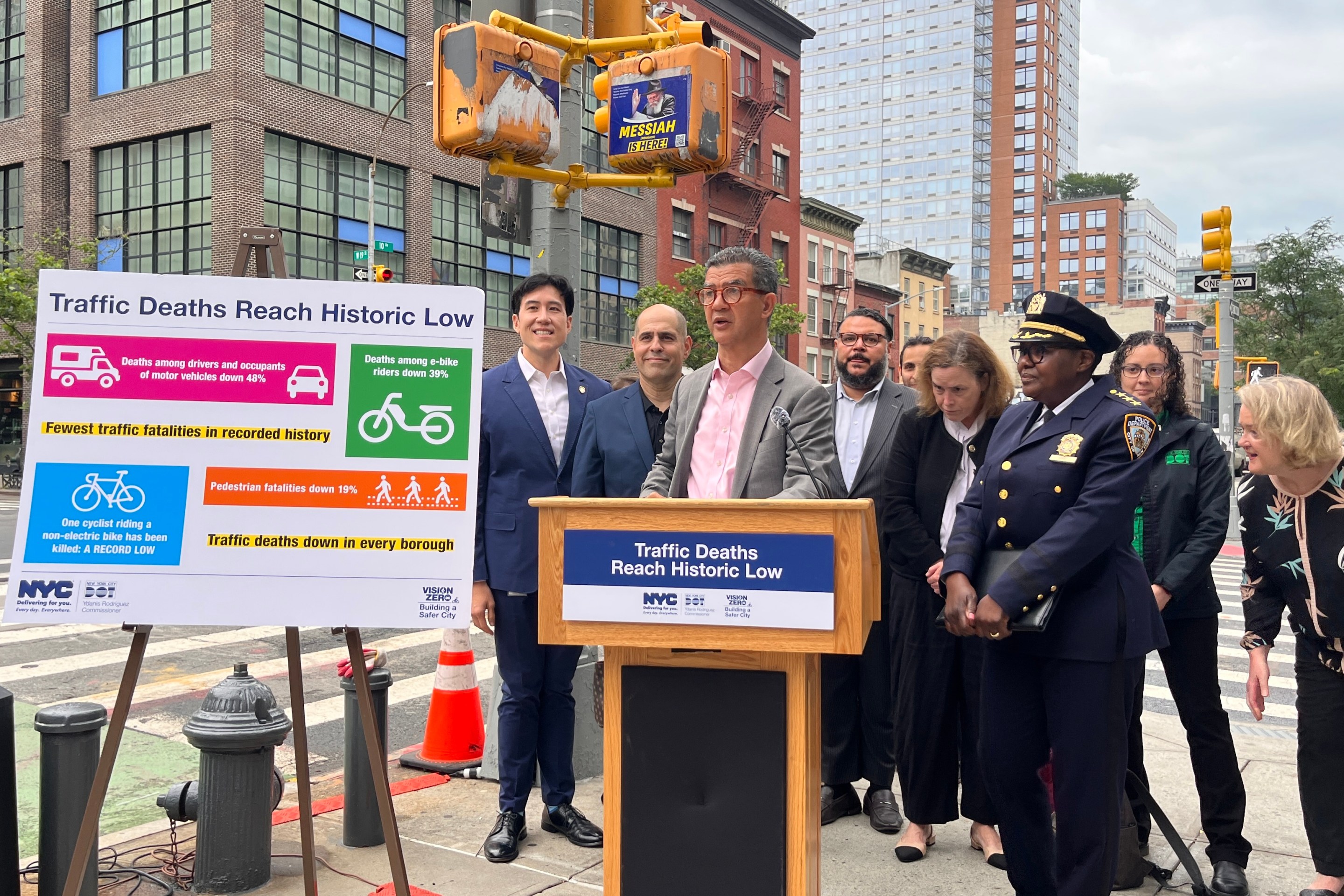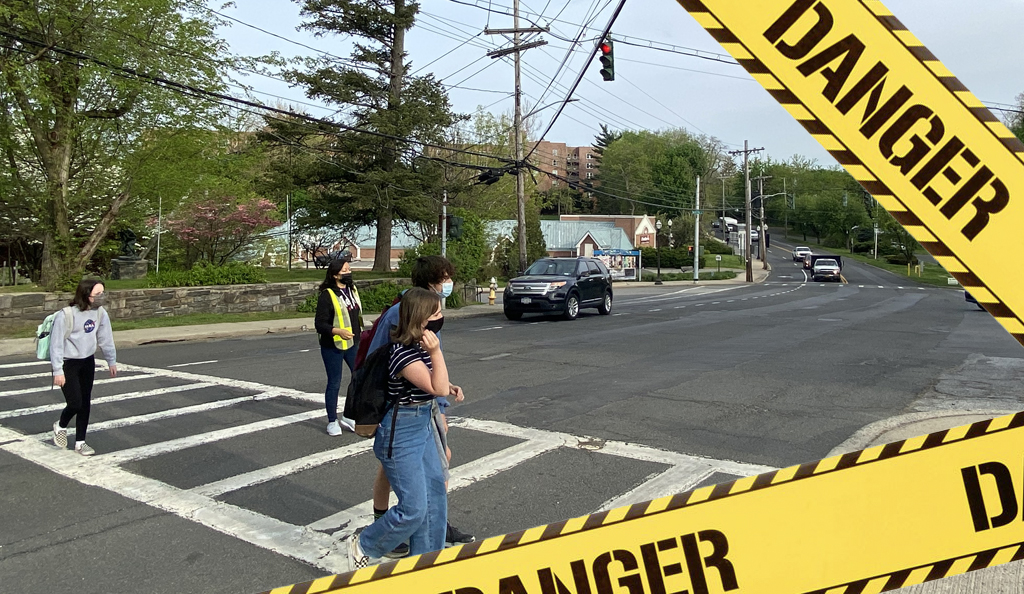Mayor de Blasio once again argued on Tuesday that he could not create more open space for socially responsible recreation because the NYPD was "adamant" that the new areas could not be properly enforced — but this time, the mayor staked out new territory that will likely to come back to haunt him: He blamed reckless drivers.
On Tuesday, the mayor went beyond his standard answer about the demise of his short-lived, short-ambitioned, over-staffed open-space experiment, claiming this time that the pilot program needed so many police officers because drivers would endanger pedestrians — an interesting theory because the constant danger represented by drivers is the very reason de Blasio began his Vision Zero initiative in 2014.
Here was the mayor's response to the question from NBC4's Andrew Siff (not Streetsblog this time!), who asked about how Oakland was able to create 74 miles of open streets, and New York City was only able to create 1.5 miles (the mayor's answer has been edited only to eliminate redundancies — our coverage comes after the quotation):
I asked the NYPD and Department of Transportation to analyze the Oakland plan. Adamantly, the answer back was, "We are just profoundly different than those other cities." In Oakland, as I understand it, they said that streets were closed off, but they didn't put up any barricades [Editor's note: Photos from Oakland show that this is untrue]. They didn't have any enforcement. They just depended on drivers to not go on those streets and everyone to look out and be careful and that's noble ... but we are not comfortable saying that we are going to just assume that [drivers] are going to be safe because that's [their] good intention. You know, this is all about safety, Andrew. ...
And I do not believe we can do that [open streets] safely. ... We've analyzed the possibility. The answer is, I do not believe it will work, period. ...
The last thing I want to do is have a situation where we end up endangering people because we put a plan in place that we could not enforce properly.
It's the first time the mayor shifted the "safety" argument away from the threat of pedestrians gathering too closely together in the newly created open space to the threat posed by car drivers.
“I do not believe it will work, period.” @NYCMayor on why #NYC cannot adopt the #Oakland plan — closing many streets to allow social distancing. #NBC4NY pic.twitter.com/QKJxiQYgja
— Andrew Siff (@andrewsiff4NY) April 14, 2020
And here's why that will come back to haunt him: By emphasizing that drivers are the main threat to public safety, the mayor now will be held accountable for not doing enough going forward.
Indeed, Vision Zero street safety strategies are working — overall (except for last year's outlier), road deaths are dramatically down under this mayor, the result of proven road redesign and enforcement strategies: protected bike lanes, pedestrianized zones, road diets and other efforts to reduce speeding, pedestrian islands, speed bumps, and, of course, speed cameras. All of those things are, of course, better than Oakland's barricades. But they're also better than deploying cops to guard play streets when they obviously have better things to do.
Since launching Vision Zero in 2014, de Blasio has never gotten the number of road deaths below 200. And since he took office, more than 1,010 pedestrians and cyclists have been killed by motorists. And, until the COVID-19 crisis, total vehicle miles traveled have gone up in New York City, not down.

But in areas of the city where the roads are getting safer, they are getting safer because of DOT, not NYPD. Indeed, on Fourth Avenue in Brooklyn, or 43rd Avenue in Queens, or Second Avenue in Manhattan, it isn't cops that protect cyclists from speeding motorists — it's a well-designed protected bike lane. In Times Square and Herald Square, it's not a traffic agent keeping cars from slamming into pedestrians — it's large car-free zones with planters and tables.
So by finally — and clearly — pointing out that drivers are the threat to public safety, the mayor now owns it. And he knows it, too, judging by his response to a different question on Tuesday:
"We have to get away from individual automobile use a lot more," he said. "We have to build a city that more and more will rely on mass transit. We have to double down on everything we've done with Vision Zero. I intend to create a plan that will do all of that. Because when we finish beating this enemy, we've got another enemy up ahead that's fierce."
It will all have to wait, of course, given that the mayor slashed his own Vision Zero budget for the rest of this year and into the next. But at least he said the words: "We are not comfortable saying that [drivers] are going to be safe because that's [their] good intention."
The only "good intentions" we need now are the mayor's — to keep drivers away from the most-vulnerable road users.
